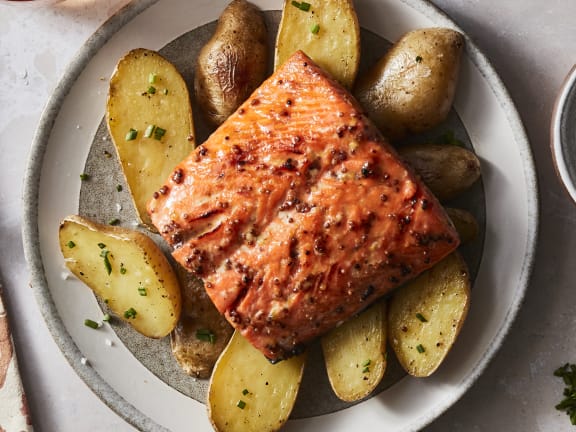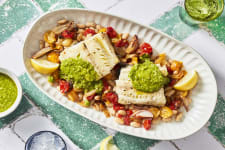Even if you don't have much experience cooking seafood at home, there are some very simple things you can do to get yourself oriented in the kitchen — even if you're just getting to know with the species at hand.
I want to share four tips that were most helpful to me when I was first starting out with seafood.
Thaw closest to cooking.
Unless you get your fish dockside in Alaska, you will experience the best quality and taste in your fish when it stays consistently frozen until you are ready to cook. Then, defrost it gently! I recommend these two methods:
-
The Overnight Thaw (10 to 12 hours): This is perhaps the "ideal" way to defrost, as it is the gentlest, most hands-off method. Once the seafood is defrosted, you have the flexibility to cook it within 2 or 3 days — but I like to cook it the day it's defrosted for the freshest results.
-
The Quick Thaw (less than an hour): The "quick-thaw" is an easy, convenient method for defrosting seafood that can have your seafood ready to cook in under an hour. Note that you'll need to cook it shortly after it's defrosted, so only use this thawing method when you're actually prepared to cook. (Personally, this is my go-to, since I don't always have time to plan ahead.)
You'll find step-by-step guides to both defrosting methods here. You can also scroll through a video recording of one of our Live Events to see how easy it is to thaw, whichever method works best for you.
Pat your fish dry.
For perfectly cooked fish, moisture is not your friend — not always, anyway.
What I mean is that moisture on the surface of fish can get in the way of a golden crust, a sizzling broil, or clean grill marks. Basically, unless you're poaching or steaming fish, it's important to pat the fish dry before you cook it. It's as easy as using a paper towel or clean kitchen towel to gently absorb any excess moisture on the fillet.

Don’t overcook wild fish.
Wild fish cooks differently than farmed fish — in some cases, cooking signifcantly faster. This is especially true with wild species of salmon like sockeye or coho, which are much leaner than farmed Atlantic salmon.
When I was first getting a handle on how to cook wild-caught species of Alaskan fish, I found that an instant-read thermometer was one of my most helpful tools. Having an objective read on internal tempertature made it so much easier to dial in the doneness of whatever species I was cooking.
Use these recommended internal temperatures to help guide you to flaky perfection.
Recipe inspiration is key.
It’s great to have a go-to recipe — hello, familiar favorites! — but I find that I enjoy seafood more when my recipe rotation is dyanmic, reflecting everything from my mood to the season to things that I'm curious about. If you're not sure where to start, here are some easy dishes that will help you expand your culinary options throughout the week.
I hope these resources will help you to make the most of your seafood and inspire you to cook healthy, delicious meals any day of the week.
Live Wild,
Monica







